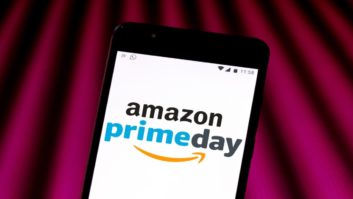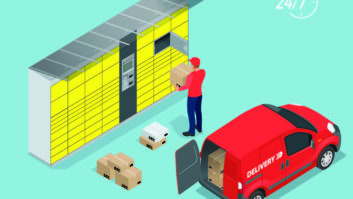
It’s already been a long year for CE retailers.
There’s the proposed $1 trillion Border Adjustment Tax (BAT) currently under consideration in DC; the end of hhgregg with more than 220 stores standing empty across the country; not to mention the continued rise (and threat) of Amazon, whose stock price topped over $1,000 a share on May 30.
Retailers looking to turn the year around are investing in the customer experience inside and outside of the store. Best Buy, which recorded a strong first quarter, is redesigning its mobile departments, matching competitive online prices in the store, and emphasizing good customer service, advice and demonstrations to build loyal customers.
But customer experience investment – and innovation – will under-deliver unless retailers commit to helping shoppers actually purchase the items they want to buy. Big-ticket industries (consumer electronics, appliances, furniture, home improvement and more) represent about $1.8 trillion of the $4.8 trillion retail industry. Today, only 11 percent ($226 million) of purchases in these industries are financed through the retailer, according to First Annapolis Consulting – even though 50 percent of shoppers are willing to use a form of retail financing to pay for their large purchases.
With consumer demand for credit surging, retailers can win big by giving consumers more purchasing power at the point of sale. The standard for retailers of big-ticket items is to work with one lending provider, with approximately nine out of 10 retailers only offering one lending option to their guests. The problem is that one lender only approves a narrow consumer demographic, a.k.a. shoppers with better than average credit who don’t necessarily need financing.
The result is that customers are being told “no” almost 50 percent of the time they apply for retail credit, First Annapolis said. In the online realm, a crushing 75 percent of customers are declined when applying for retail credit. The result is lost revenue – and a profoundly negative experience that decreases the odds that a shopper will return to your store or site.
In a tough retail landscape, customers visiting your store or website should be hearing “yes” when it comes to credit. A “good enough” mindset and 50 percent failure rate are not enough to compete in 2017. Instead, retailers must re-think how they offer credit to:
Put the customer at the center of the buying journey: Effective financing should stay in sync with shoppers as they move across web, mobile, store and call center. Consumers today expect to be able to apply for financing online and use it whenever and however they wish. They also expect a simple, streamlined application process online or in the store – more like interacting with Google or Apple than a traditional financing application. To be successful, focus on omnichannel – with an eye to providing the most convenient experience possible (for example, by offering financing both while browsing and within checkout online).
Connect consumers with multiple lenders to offer new credit choices: There are dozens of lenders across the credit spectrum that want to serve all of your customers: major banks, financing companies and a growing number of “alt-finance” lenders offering installment loans and lease-to-own options. Sound like an integration headache? New lending platforms are emerging to connect retailers and shoppers with multiple lender options through a single point of integration – online and in the store. Just as millions of people use Uber to find drivers and Airbnb to find places to stay, retailers can use lending marketplaces to connect shoppers with financing and vice versa.
Remain agile: Retail financing is a quick fix, but it isn’t magic. To make a financing program succeed, you need to find the right lending mix for your unique customer base. This can be accomplished through trial and error. Lending platforms can also help you optimize your lending mix with no need to integrate new lenders. To keep up with changing customers, it is also essential to future-proof your financing by making sure it is easy to add new financing options as demanded by consumers.
Leverage your sales associates: As the retail front line, sales associates are essential to your financing program’s success. Credit declines create a negative experience for your employees as well as your customers, and decrease the likelihood of an associate offering financing in the future. When expanding credit, you can enlist employees as advocates and minimize training by offering a single application and approval process for all credit options.
When shoppers are connected to more credit options, they hear “You’re approved!” more often. This not only keeps customers from going elsewhere for their purchase, it also turns a potentially negative experience into a strong positive for your brand and bottom line.
Former PayPal, Chase, Amex and Citibank exec Doug Filak is chief marketing officer at Vyze, a technology company that brings the financing partners and support needed to create the simplest, most satisfying financing experience for each and every customer, wherever they shop. Customers include ABC Warehouse, BrandsMart USA, Dell, Digital River and The Home Depot, among others.













